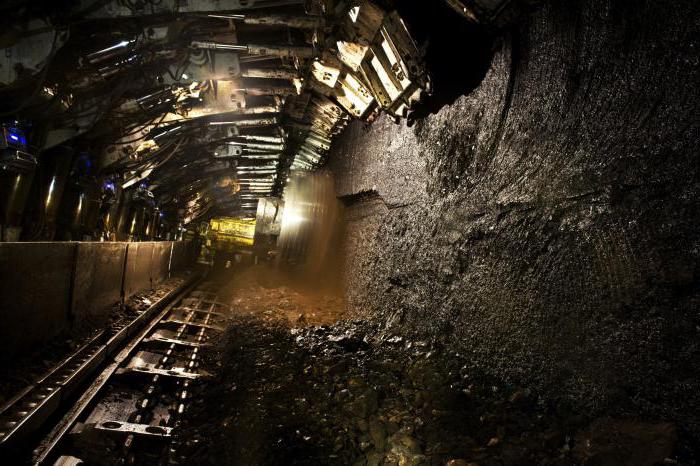Mikhailo Lomonosov, the famous Russian scientist of the 18th century, even in those ancient times gave a definition of how this mineral appeared in nature. Namely: from the remains of plants, like peat, coal also originated. His education, according to Lomonosov, was due to several factors. Firstly, the remains of the vegetation decomposed without the participation of “free air” (that is, without free access of oxygen). Secondly, a rather high temperature regime was present. And thirdly, “roof burden”, that is, increased rock pressure, played its role. This happened in ancient times, when humanity did not yet exist on planet Earth.
Cases of bygone days
In any case, the history of the formation of coal is a matter of such distant days that modern scientists can only guess and speculate, explaining the process. But today it has been studied quite accurately. And the mechanisms of how coal appears (its formation from preliminary raw materials) are known to science.
From peat
Wastes of higher plants gradually turn into peat masses, which accumulate in marshy areas and overgrow with other plants, gradually going into the depths. Being at a depth, peatlands constantly change their chemical composition (more complex compounds turn into simpler ones, decompose). Some of them are dissolved in water and washed out, and part goes into a gaseous state. So there is methane and carbon dioxide in the swamps, giving a characteristic smell of air in these deserted places. An important function in this process is played by fungi and bacteria, which contribute to the further decomposition of the tissue of dead plants.
Carbon
Over time, the most stable hydrocarbon compounds accumulate in the process of modifications in peatlands. And since all this saturation of peat masses with hydrocarbon is carried out practically without access to oxygen, carbon does not turn into gas and does not evaporate. Isolation from air access occurs and saturation occurs at the same time as pressure increases: coal forms from peat. His education lasts for hundreds of millennia, this process is not so fast! According to scientists, most of the current reserves and coal seams originated in the Paleozoic, that is, more than 300 million years ago.
This is interesting: what types of coal are there?
- The loosest and youngest of all species is lignite (which means "woody"). The remains of plant masses and wood are still visible in it. In principle, lignite is a tree peat.
- Brown type of coal is formed in the seams with a stronger decomposition of the remains of plant masses. It usually lies at a depth of one kilometer. It still has a bit too much fluid (over 40%). It burns quite well, but gives a small amount of heat.
- At a depth of up to three kilometers in many parts of the world is coal. Its formation from a brown fossil species occurs only under certain conditions: when the layers descend to deeper horizons and the process of mountain building is underway. There, under high pressure and without access to oxygen, the process of transition from one fraction to another is completed. Such coal has in its composition more than 75% carbon, burns better and gives more heat.
- Anthracite is a coal of more ancient rocks. It lies at a depth of up to five kilometers. It has even more carbon and even less moisture (almost none at all). It ignites poorly, but the heat transfer is the highest of all types. In anthracite, the remains of the plants from which it originated are almost impossible to detect. Such coal is considered the most promising in mining for industry.
But that is not all!
Nature has decreed that anthracite, the most dense coal with the highest carbon content (95 percent and higher), is not the final stage of transformations occurring with plant debris in the environment. Shungite is a substance that is formed from coal under even more stringent conditions. Graphite occurs at high temperatures from the same material. And if you add super-high pressure, then diamond is formed, the most durable substance, which has both industrial and artistic value for all of humanity.
But you should remember: strangely enough, all of these, at first glance, various substances - from plants to diamonds - consist of carbon substance, only with different structures at the molecular level!
The formation and importance of coal
The importance of coal for the development of industry and for the whole human culture on Earth cannot be overestimated. And its scope is very wide. Not to mention the fact that coal is an excellent fuel used for heating homes, furnace furnaces in industry, generating electricity, coal also produces a lot of substances that people need. Sulfur and vanadium, zinc and lead, germanium - all this gives mankind this mineral.

Coal is used for melting metal, steel, cast iron. Coal burning products - in the production of some building materials. During special processing of fossil, benzene is obtained from it, which is used in the manufacture of varnishes and solvents, such a building material as linoleum. Liquid fuel for mechanisms comes out of liquefied coal with special technologies. Coal is the initial raw material for the production of graphite and industrial diamonds, and in all, more than four hundred products for industry and the service industry are manufactured on the basis of this natural material.
Natural History at School: Coal Formation
For children, when passing the relevant topic in the middle classes, it is recommended to talk in an accessible form about the formation of coal in nature. It should be reported how long this process lasts. Describing the formation of coal briefly, it is necessary to focus on its importance for the development of industry and progress in modern and historical conditions, to draw up a communication plan that students will do on their own.